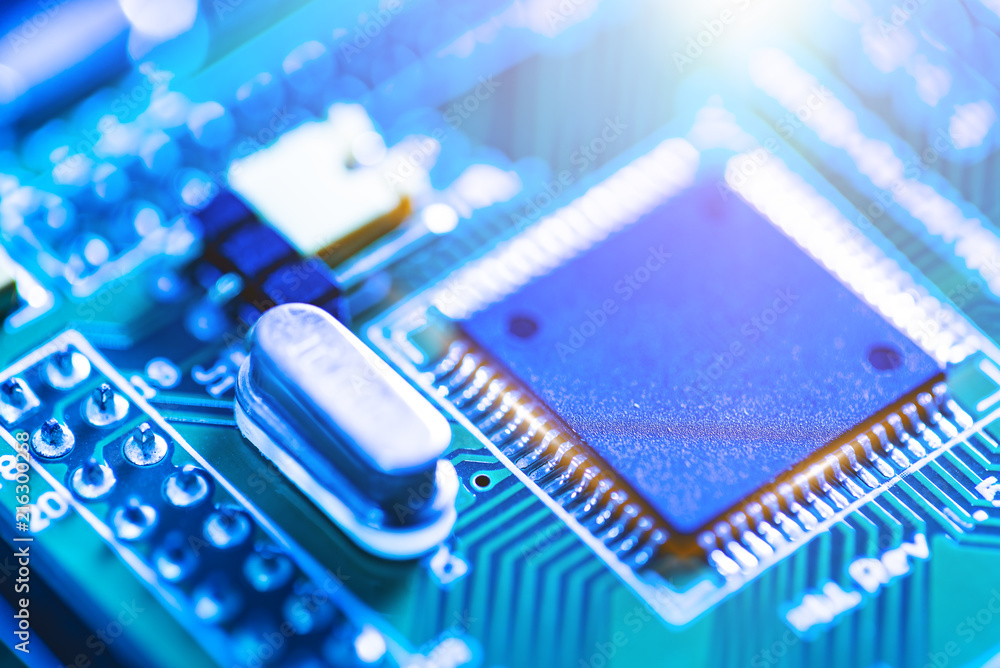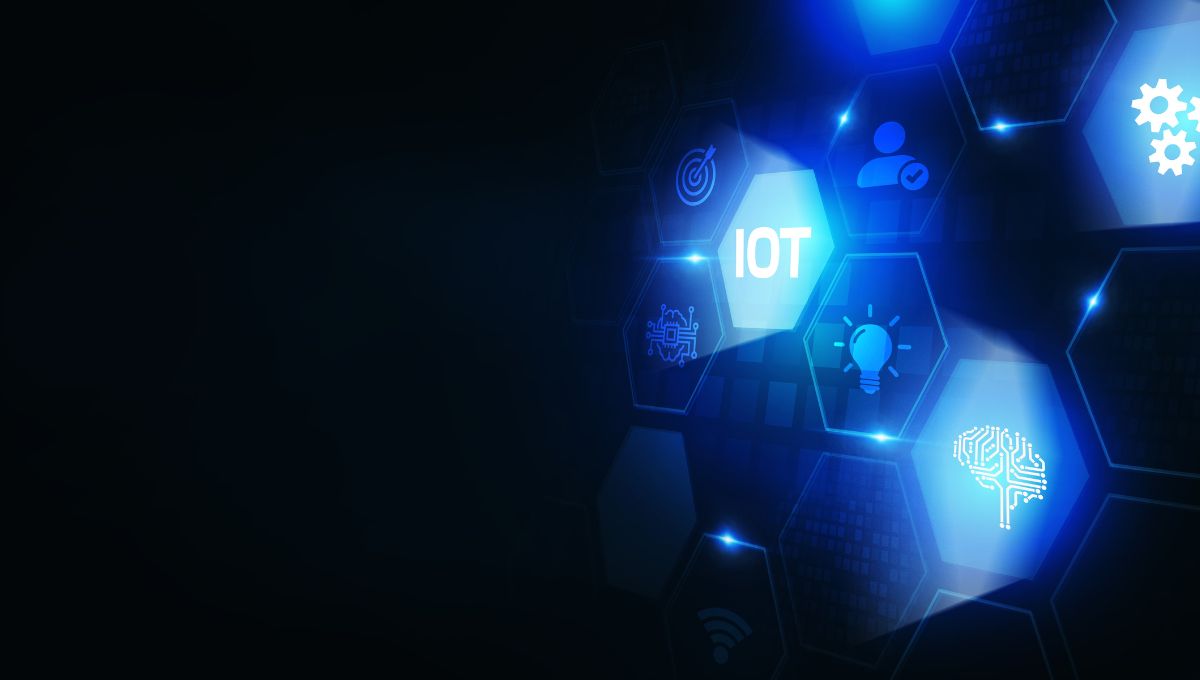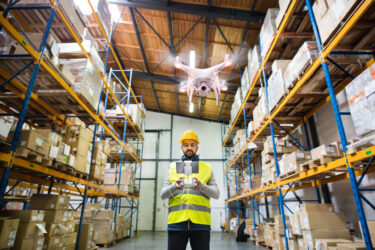

Some say that data is the “oil of the 21st century”. Experts estimate that by 2026, IoT networks will integrate even 64 billion devices. IoT devices can vastly improve everyday lives, and business processes and IoT solutions are becoming increasingly popular.
IoT device management can sometimes be complicated, and onboarding new devices or sensors connected to the network may not be easy. It can also require more specialised knowledge not everyone may have. Thus, simplifying this onboarding process may be crucial for the Internet of things to be widely accessible. SIN-On (Seamless IoT Node Onboarding Tool) is an example of a tool that helps quickly onboard new IoT nodes into the network.
- A brief introduction to IoT devices, IoT sensors, sensor data, and IoT data
- What are the Internet of things nodes, and how do they work?
- What are the challenges of onboarding new nodes?
- Key features of the SIN-On (Seamless IoT Node Onboarding) tool
- SIN-On creation process and motivations
- Why is SIN-On an innovative, groundbreaking solution?
- How does the SIN-On solution work?
- Implementing the SIN-On tool into our projects
- Which industries can benefit the most?
- SIN-On tool – the future of IoT
A brief introduction to IoT devices, IoT sensors, sensor data, and IoT data
What is the Internet of things – IoT?
In its simplest definition, the Internet of Things (IoT) is a system of interrelated computing devices, objects, mechanical and digital machines, people and animals that have their unique identifiers (UIDs) and some sensing or computational capabilities. They can transfer data within the network without needing human-to-human or human-to-computer interaction.
What are examples of IoT devices?
IoT devices can be very different, depending on what they need to do and what data to collect. Internet of things devices may include home automation devices like Google Assistant or Amazon Alexa, health wearables such as an activity tracker or a heart rate monitor and other similar devices.
These electronic devices connected to applications send data that we can gather, for example, by using the BLE (Bluetooth Low Energy) connectivity method. They collect and preprocess data that we can visualise within dedicated IoT applications.
How do IoT sensors work, and how is the sensor data collected?
Sensors can be a built-in device or some sort of chip, as well as an external device that collects data. The IoT gateway, a hub for connected devices, collects sensor data from connected sensors and passes them further. Gateways come in many forms and can work in different ways, depending on the requirements of the given IoT platform or network. Such an IoT gateway is capable of supporting multiple IoT devices communicating spontaneously.
What are the Internet of things nodes, and how do they work?
A node within the IoT network makes pieces of hardware connected to the IoT network. In other words, they are all those devices that link within the IoT network through the gateway. For example, smart devices like smartphones and smartwatches create an IoT system where the smartwatch makes a node in this system. Each new node requires onboarding into the network. For example, Bluetooth devices can be onboarded into a smartphone via pairing with a dedicated app.
What are the challenges of onboarding new nodes?
Onboarding new nodes (or IoT devices) into an IoT platform can be challenging, as it may require specialist knowledge about the network and the smart devices, which may sometimes be hard to obtain. A Survey of Commercial Frameworks for the Internet of Thingsshows a need to create more advanced frameworks and tools to help businesses seamlessly implement new IoT devices and nodes to existing systems or the Internet of Things infrastructure. The survey dates back to 2015. However, the progress towards a more seamless implementation of new nodes and IoT devices into the existing network has yet to be sufficiently significant. Cristina Paniagua and Jerker Delsing have confirmed it in their research Industrial Frameworks for Internet of Things: A Survey, published in 2021.
Tools available before SIN-On had limitations regarding the number or type of devices connectable to the system. The onboarding process required manual configuration and, thus, more extensive user knowledge or professional assistance. Many business sectors also needed help with compatibility during the onboarding process. These problems resulted in increased costs and delays that could ultimately negatively impact growth.
Key features of the SIN-On (Seamless IoT Node Onboarding) tool
SIN-On is an onboarding tool allowing new sensors and devices to get into the Internet of Things in as little as two minutes. Moreover, all it requires is an intuitive smartphone application. The tool makes onboarding many devices easy and intuitive. Since the application is user-friendly and easy to use, there’s no need for professional help in the process.
The key features of the solution include the following:
- Automation of onboarding the IoT devices into the local cloud services
- A solution optimised in terms of scalability and the possibility of expanding industrial IoT, IT and production ecosystems
- Supporting device signatures (Trusted Computing Group standards, including TPM2.0)
- Implementing local cloud services through automatic configuration
- Plug-and-play approach for onboarding general-purpose sensors
- Identification and verification of new nodes with mobile devices (built-in NFC)
SIN-On creation process and motivations
Over three years, the SIN-On tool creation was a part of the Arrowhead Tools project. Working in a large group like this enabled us to validate the idea, acquire necessary data and perform initial implementations.
The Arrowhead Tools project is a consortium comprising 82 partners, including 28 universities, research institutes, and 53 companies from 18 countries. Its primary objective is to create engineering tools for innovative solutions within the automation and digitisation area of the European industrial sector.
The key objectives and motivations behind creating SIN-On
- Reducing engineering costs related to the implementation and upkeep of a wireless network of sensors
- Reducing the need for professional assistance or service crew
- Automated handling of devices credentials throughout the toolchain
- Ability to remotely manage sensors and IoT gateways
- Uninterrupted and continuous diagnostics
- Compatibility and integration with a larger ecosystem, achieved through the Eclipse Arrowhead

Why is SIN-On an innovative, groundbreaking solution?
This onboarding tool is a state-of-the-art product for many sectors using the Internet of Things for their operations. Its most innovative and crucial feature involves easy, automated onboarding of the new nodes within 2 minutes using only a dedicated smartphone app. The process is thus simplified as much as it can be, allowing any company and employee to do it without needing professional service.
Based on the HTTPS protocol, the backend enables seamless and easy communication with every sensor and node receiving or providing sensor data. The connection between the gateway and the backend can also use MQTT. It enables the transmission to multiple nodes simultaneously rather than sending the signal to one node at a time. In turn, it shortens the system’s reaction time.
Without the SIN-On tool, the user would need to program the microcontroller to read the data from a specific sensor. Moreover, they would need to manually set up the communication interface between the data provider and consumer, which is now possible to do automatically, thanks to the tool.
How does the SIN-On solution work?
The credentials of a node, stored in the secure memory of the hardware security module, are scanned through a phone’s NFC, which takes the user to the onboarding web application. After logging in, the app will request the node’s name and the target onboarding gateway and choose one of the preset configurations to onboard the node.
Upon completing the above steps, the data travels to the cloud management interface, which passes the configuration to the specific gateway. Then, the gateway begins searching for the unpaired nodes. Once the node is powered up, and in range of the gateway, they pair together, the gateway sends the configuration to the node (through GAP GATT REST API), and the node starts providing the data. The data is passed to influxdb and visualised in real time.
This onboarding toolchain makes deploying new sensor networks easily manageable, configurable, and secure. It can be compatible with your own embedded or cloud solution, where the measurements can be processed onboard or via a distributed application.
Implementing the SIN-On tool into our projects
At DAC.digital, we used SIN-On to improve other technologies and solutions. It helped us with the BARTI (Balancing Automation of Returnable Transport Items) project. The project aims to help transport companies that lose 15-20% of their RTI (Returnable Transport Items) annually. It allows for making all the RTI elements identifiable and nearly impossible to be lost. It contributes to reducing the losses related to RTI.
With the help of the SIN-On tool, we designed a decentralised IT infrastructure for intelligent RTI management. We could then test the solution and its practical capabilities properly. We could implement it in other projects, including our signature product – MuuMap. It’s a system that companies implement internationally, designed to supervise milk transport.

Which industries can benefit the most?
SIN-On tool can prove itself useful in many sectors. Here are some examples that could particularly benefit from easy and seamless node onboarding:
MedTech: IoT devices are essential in the healthcare industry, as they help monitor patients’ vital parameters and other key indicators in treating various conditions or ailments, especially those requiring precise and constant monitoring, such as different heart conditions. The tool can help reduce the reaction time necessary for the medical staff to aid the patient. It can also allow analysing of the data in real time to help prevent mistakes and shorten the wait time for an intervention.
Smart cities: Internet of Things technologies can contribute to supporting the city’s infrastructure, energy management or public services. It can improve balanced development, implement intelligent transport solutions or optimise the lighting in public areas. SIN-On enables constant control of the connected sensors for quick reaction and implementation of necessary changes. Ultimately, fast responses and changes can improve the cities’ overall sustainability and air quality.
Agriculture: the Internet of Things contributes to more sustainable and effective cultivation management. In turn, it can help save water and energy, ultimately reducing the carbon footprint. SIN-On, simplifying the onboarding processes, can help achieve more sustainable and effective cultivation for increased profits.
Industrial systems and production: the Internet of Things in the industrial sector is primarily helpful for optimising workflow and the parameters of the machines and other devices. Here we talk about the industrial Internet of things (IIoT). It refers to interconnected sensors, instruments, and other devices networked with computers’ industrial applications, including manufacturing and energy management. Thanks to the constant monitoring of the nodes within the network, SIN-On can contribute to more optimised production and supply chain work and reduce errors and downtime.
SIN-On tool – the future of IoT
Given the role and the size of IoT in everyday lives and business processes is estimated to keep growing exponentially in the coming years, a reliable tool for onboarding new nodes will be essential in developing the Internet of Things networks.
SIN-On can become a crucial tool for this purpose, as it addresses the needs of different sectors and areas of life and business. It’s intuitive and easy to use, reducing the need for professional assistance or specialised knowledge of complex manual processes. Automating the onboarding process will make it significantly more accessible for the IoT networks to grow as needed.
Katarzyna Świątek
Junior Content Specialist at DAC.digital





